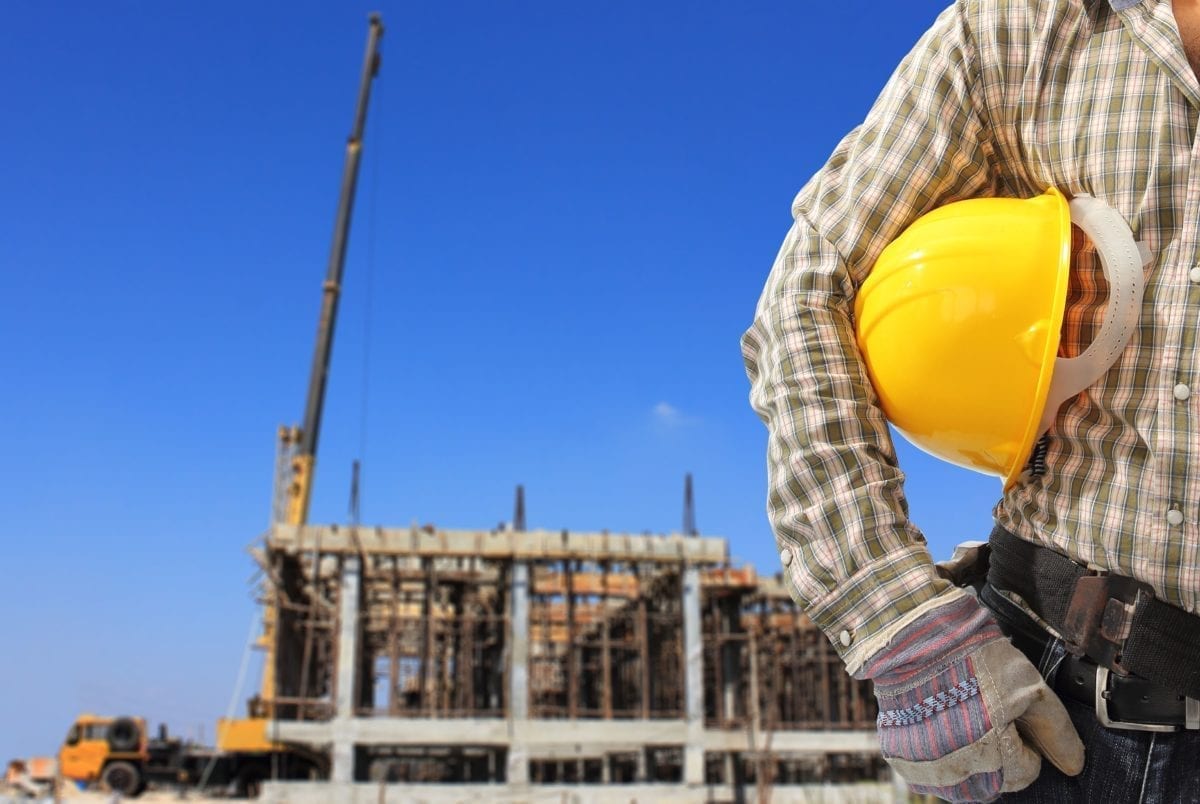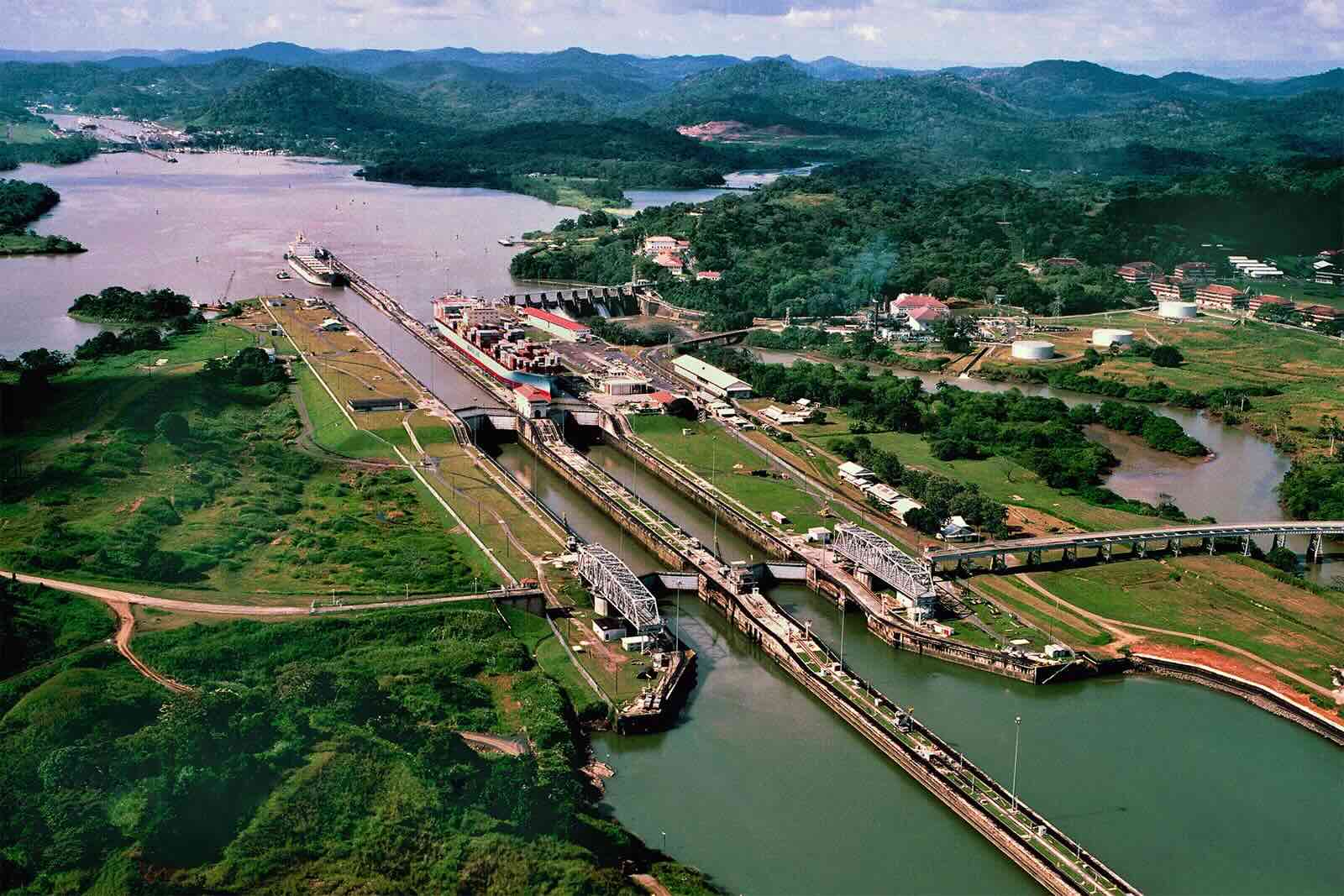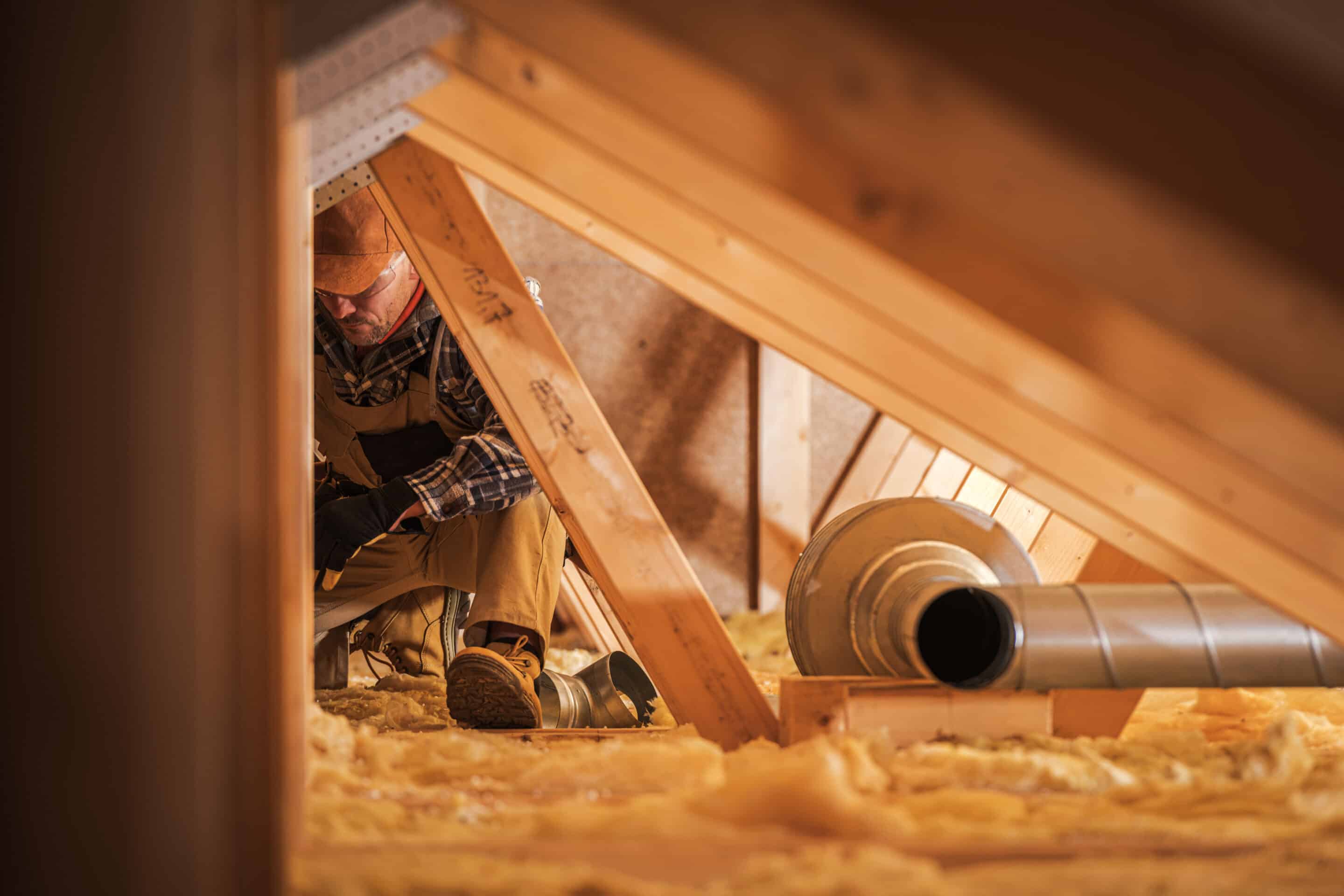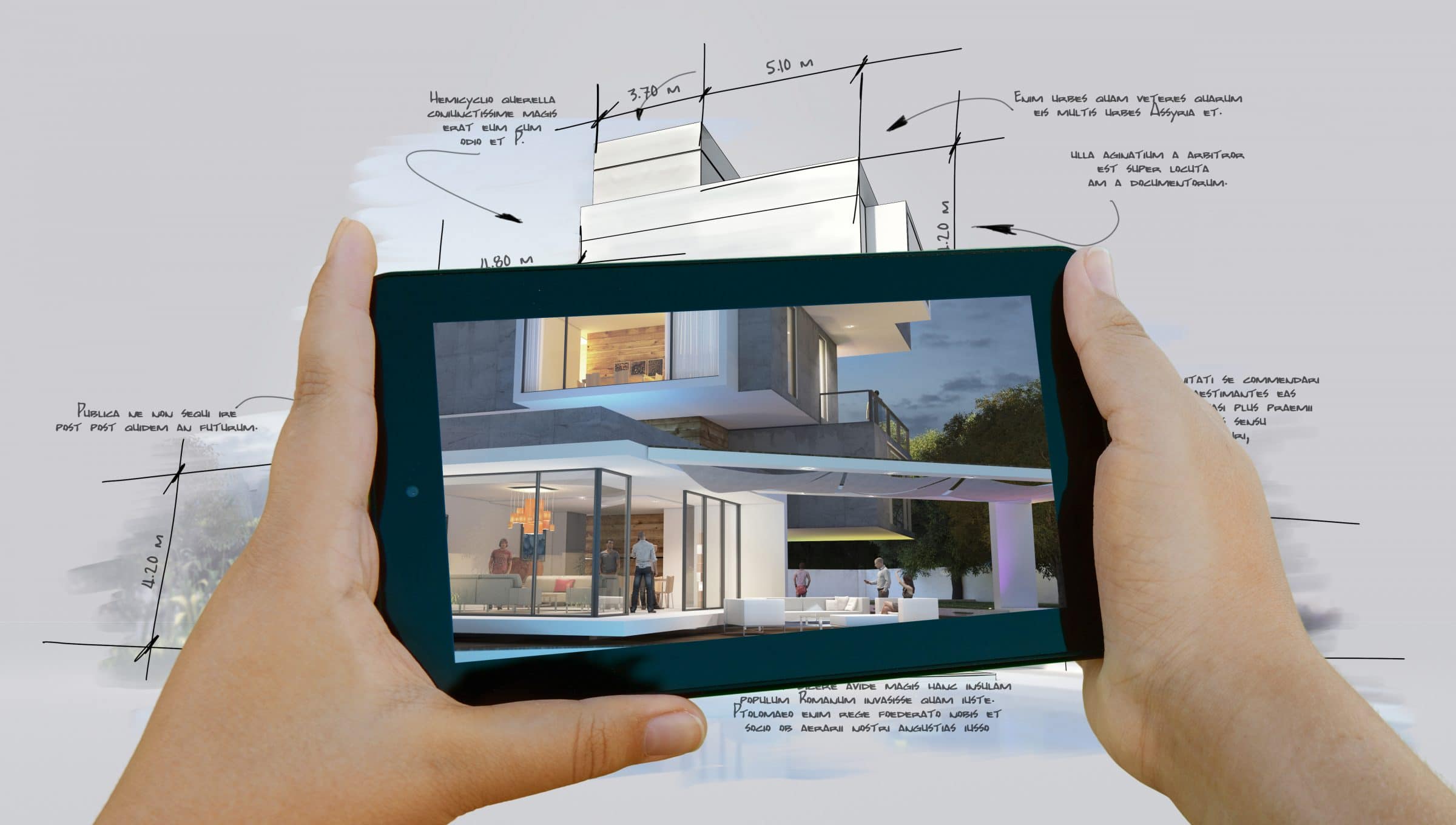Home>diy>Building & Construction>Why Construction Is Important


Building & Construction
Why Construction Is Important
Modified: October 20, 2024
Discover why building construction is crucial for various industries and the economy. Learn about the importance of proper construction techniques and quality materials for long-lasting structures.
(Many of the links in this article redirect to a specific reviewed product. Your purchase of these products through affiliate links helps to generate commission for Storables.com, at no extra cost. Learn more)
Introduction
Welcome to the world of construction – a vibrant and dynamic industry that plays a crucial role in shaping our built environment. From towering skyscrapers to intricate bridges, from residential dwellings to commercial complexes, construction is the backbone of our modern civilization.
Construction, simply put, is the process of building and assembling structures, infrastructure, and facilities. It encompasses a wide range of activities, including design, planning, materials sourcing, project management, and construction itself. The construction industry is diverse, involving various sectors such as residential, commercial, industrial, and infrastructure development.
In this article, we will explore the importance of construction in our society and delve into its economic impact, job creation, infrastructure development, housing and shelter, environmental considerations, urbanization, and even its historical significance. So, let’s dive in!
Key Takeaways:
- Construction is the backbone of economic growth, job creation, and infrastructure development, shaping our built environment and driving progress in society.
- The construction industry’s historical significance, environmental considerations, and role in urbanization highlight its vital contribution to societal well-being and cultural heritage.
Read more: Why Construction Safety Is Important
Economic Impact of Construction
The construction industry is a significant driver of economic growth and development. It has a substantial impact on the overall economy, both in terms of direct and indirect contributions. Let’s take a closer look at some of the ways in which construction influences the economy:
- Job Creation and Employment: Construction projects require a large workforce, encompassing a wide range of skills and professions. From architects and engineers to masons and electricians, construction offers employment opportunities for various segments of the population. Not only does it create jobs directly within the industry, but it also generates employment indirectly by stimulating related sectors such as manufacturing and transportation.
- Investment and Expenditure: Construction projects entail significant investments in materials, equipment, and labor. These investments have a multiplier effect, as they spur demand for goods and services, benefiting various sectors of the economy. Construction projects also contribute to public and private spending, driving economic activity and boosting local businesses.
- Tax Revenues: The construction industry generates substantial tax revenues for governments at all levels. This revenue is often reinvested in infrastructure development, education, healthcare, and other public services. The taxation of construction-related activities contributes to the overall economic well-being of a region or country.
- Gross Domestic Product (GDP) Growth: Construction is a key contributor to the Gross Domestic Product (GDP) of a nation. The sector’s output, which includes the value of newly constructed buildings and infrastructure, contributes significantly to a country’s economic growth and development.
- Entrepreneurship and Innovation: The construction industry fosters entrepreneurship and innovation. It provides opportunities for contractors, builders, and developers to start their own businesses and create value through innovative construction methods, technologies, and sustainable practices. These advancements contribute to long-term economic growth and competitiveness.
In summary, the construction industry plays a vital role in stimulating economic activity, creating employment opportunities, attracting investments, generating tax revenues, and promoting innovation. It is a key driver of economic growth, contributing to the prosperity and development of nations around the world.
Job Creation and Employment
The construction industry is known for its role as a major job creator. It offers employment opportunities to millions of people worldwide, spanning various skill levels and professions. Let’s explore how construction contributes to job creation and employment:
- Skilled and Unskilled Labor: Construction projects require a diverse workforce, ranging from skilled tradespeople like carpenters, plumbers, and electricians to unskilled laborers who contribute to tasks like material handling and site preparation. These jobs provide opportunities for individuals with varying levels of education and skill, catering to a broad spectrum of the labor market.
- Specialized Professions: Beyond the on-site workers, construction also encompasses a range of specialized professions. Architects, engineers, project managers, quantity surveyors, and other professionals contribute their expertise to the planning, design, and management of construction projects. These roles require specialized knowledge and often involve coordination with various stakeholders.
- Diverse Career Paths: The construction industry offers a wide range of career paths, allowing individuals to grow and progress in their chosen fields. Starting as an apprentice or entry-level worker, one can eventually acquire the skills and experience necessary to become a supervisor, project manager, or even start their own construction business.
- Entrepreneurship Opportunities: Construction provides favorable conditions for entrepreneurship. Many construction workers eventually venture into starting their own businesses, offering services like contracting, remodeling, or specialized trades. This entrepreneurial spirit not only enhances job creation but also fosters innovation and drives economic growth.
- Indirect Employment: The impact of construction on employment extends beyond the industry itself. Construction activities require the procurement of materials and equipment from various suppliers, creating indirect employment opportunities in manufacturing, transportation, and logistics. Additionally, the support services needed during construction, such as architecture firms, engineering consultants, and legal professionals, also contribute to job creation.
The construction industry’s ability to provide employment opportunities at different skill levels and across various professions makes it a vital sector for labor markets worldwide. Its continuous demand for both skilled and unskilled labor fosters inclusivity and mobility, offering individuals the chance to develop valuable skills, earn a livelihood, and contribute to the economy.
Infrastructure Development
Infrastructure development is a crucial aspect of any society’s progress and overall well-being. From transportation networks to utilities and public facilities, a well-developed infrastructure is essential for economic growth, social connectivity, and quality of life. The construction industry plays a pivotal role in the planning and execution of infrastructure projects. Let’s delve into how infrastructure development impacts society:
- Transportation: Construction is vital for the development of transportation infrastructure, including roads, bridges, railways, airports, and ports. Efficient transportation networks facilitate the movement of goods, people, and services, connecting regions and fostering economic activity. Construction projects in this sector focus on expanding and improving existing infrastructure, as well as creating new transportation routes to meet growing demands.
- Utilities and Services: Construction is instrumental in the creation of essential utilities and services that support communities. This includes the construction of water supply systems, wastewater treatment facilities, electrical power distribution networks, telecommunications infrastructure, and more. These infrastructures are critical for public health, safety, and sustainable development.
- Public Facilities: Construction is responsible for the development of public facilities such as schools, hospitals, government buildings, recreational centers, and parks. These structures provide essential services to the community, promoting education, healthcare, governance, and leisure activities. Construction projects in this domain focus on creating safe and functional spaces that cater to the needs of society.
- Resilience and Disaster Management: Construction plays a crucial role in building resilience and mitigating the impact of disasters. This includes the construction of infrastructure that can withstand natural disasters such as earthquakes, hurricanes, and floods. Additionally, construction projects focus on developing early warning systems, disaster response facilities, and resilient infrastructure to protect communities and facilitate recovery.
- Sustainable Development: Infrastructure development in the construction industry increasingly focuses on sustainability and environmental stewardship. Construction projects incorporate green building practices, renewable energy sources, water conservation measures, and waste management systems to reduce the environmental impact. Sustainable infrastructure supports a cleaner and healthier environment for future generations.
Infrastructure development through construction projects is essential for societal progress. By creating robust transportation networks, reliable utilities, functional public facilities, and resilient structures, construction contributes to economic growth, social well-being, and sustainable development. It is through strategic infrastructure development that communities can thrive and prosper.
Housing and Shelter
Housing is a fundamental human need, and construction plays a vital role in meeting this need by providing shelter for individuals and families. The construction industry is responsible for the development of residential buildings and housing infrastructure, ensuring that people have safe, comfortable, and affordable places to live. Let’s explore the significance of construction in the context of housing and shelter:
- Affordable Housing: Construction addresses the need for affordable housing by building homes that cater to varying income levels. Affordable housing projects aim to provide safe and quality housing options for low to moderate-income individuals and families. These projects often involve collaboration between the government, private developers, and non-profit organizations to ensure that affordable housing is accessible to those in need.
- Social Housing: Construction plays a crucial role in the development of social housing, which refers to housing units that are subsidized or provided at reduced rates to individuals or families with limited financial means. Social housing initiatives aim to support vulnerable populations, such as the elderly, individuals with disabilities, and low-income households, ensuring they have access to secure and affordable housing options.
- Urban Renewal and Redevelopment: Construction is essential for urban renewal and redevelopment projects, which involve revitalizing neglected or underutilized areas in cities. These projects often include the construction of housing complexes, condominiums, or mixed-use developments. By providing new housing options, urban renewal initiatives contribute to the growth of vibrant and sustainable communities.
- Customization and Flexibility: Construction allows for customization and flexibility in housing. From single-family homes to multi-unit apartment buildings, construction projects can be tailored to the specific needs and preferences of individuals and communities. This flexibility ensures that housing solutions are diverse and adaptable to changing demographic, social, and cultural contexts.
- Quality and Safety: Construction ensures that housing is built to meet safety standards and regulations. By employing skilled professionals and adhering to building codes, construction projects prioritize the structural integrity, quality, and safety of housing units. This plays a crucial role in providing occupants with secure and comfortable living environments.
Construction’s contribution to the development of housing and shelter is not only vital for individual well-being but also for the overall stability and growth of communities. By providing affordable, accessible, and well-built housing options, construction helps create inclusive societies where individuals and families can thrive.
Tip: Construction is important for creating infrastructure, homes, and commercial spaces. It also provides jobs and stimulates economic growth.
Environmental Considerations
As the world increasingly focuses on sustainable development and environmental conservation, the construction industry plays a pivotal role in addressing these concerns. Construction projects have significant environmental impacts, ranging from resource consumption to waste generation. Recognizing these challenges, the industry has been actively incorporating environmental considerations into its practices. Let’s explore some of the key environmental considerations in construction:
- Energy Efficiency: Construction projects are embracing energy-efficient design and building practices to reduce energy consumption and minimize greenhouse gas emissions. This includes the use of energy-efficient building materials, insulation, efficient HVAC systems, renewable energy sources, and smart building technologies. By reducing energy demand, construction contributes to lower carbon footprints and mitigates climate change.
- Sustainable Materials: Construction is increasingly utilizing sustainable and eco-friendly materials. This includes materials with low environmental impact, such as recycled or reclaimed materials, sustainably sourced wood, and environmentally friendly alternatives to traditional building materials. By choosing sustainable materials, construction projects help conserve natural resources and reduce waste generation.
- Waste Management: Construction generates a considerable amount of waste, including construction debris, packaging materials, and excess materials. Construction projects are now implementing waste management strategies such as recycling and proper disposal to minimize the environmental impact. Efforts are made to reduce waste through efficient project planning, material optimization, and the reuse of materials where possible.
- Water Conservation: Construction projects are focusing on water conservation measures throughout all stages of construction. This includes implementing water-saving technologies, such as low-flow fixtures and rainwater harvesting systems. By reducing water consumption, construction contributes to the preservation of this precious resource.
- Site Ecology and Biodiversity: Construction projects often involve land development, which can impact local ecosystems and biodiversity. To mitigate these effects, construction incorporates measures to protect and preserve existing natural habitats. This includes retaining trees and vegetation, creating green spaces, and implementing ecological restoration strategies. By preserving biodiversity, construction ensures a healthier and more sustainable environment.
Environmental considerations in construction are vital in creating a more sustainable and resilient future. By integrating energy-efficient practices, sustainable materials, waste management strategies, water conservation, and ecologically responsible approaches, the construction industry contributes to the protection of our environment. These efforts not only minimize environmental impacts but also promote healthier and more livable communities for generations to come.
Urbanization and Development
Urbanization is a significant global trend, with more people moving from rural areas to cities in search of better opportunities and an improved quality of life. The construction industry plays a vital role in supporting urbanization and driving sustainable development. Let’s explore the relationship between construction, urbanization, and development:
- Infrastructure for Urban Growth: As cities grow, there is a need to develop infrastructure to cater to the increasing population. Construction projects are essential for building roads, bridges, public transportation systems, utilities, and other critical infrastructure. These developments enable urban areas to function efficiently, accommodate growing populations, and facilitate economic activity.
- Mixed-Use and Compact Development: To address the challenges of urbanization, construction projects increasingly focus on mixed-use and compact development. Mixed-use developments combine residential, commercial, and recreational spaces in one area, reducing the need for long commutes and creating vibrant communities. Compact development aims to maximize land use efficiency, reducing urban sprawl and preserving valuable natural areas.
- Affordable and Sustainable Housing: Urbanization brings the need for affordable housing options in cities. Construction projects work towards developing affordable housing complexes, high-rise apartments, and mixed-income communities to cater to the diverse needs of urban dwellers. These projects also emphasize sustainability by incorporating energy-efficient design, green spaces, and eco-friendly features to create livable and environmentally responsible urban environments.
- Revitalizing Urban Areas: Construction plays a key role in revitalizing and rejuvenating urban areas. Redevelopment projects breathe new life into neglected or underutilized spaces, converting them into vibrant communities. These projects often involve repurposing old buildings, revitalizing historic neighborhoods, and rejuvenating urban centers to create attractive and culturally rich environments.
- Smart and Resilient Cities: Construction is instrumental in creating smart and resilient cities. Smart city initiatives incorporate technology and data-driven solutions to improve urban services, enhance efficiency, and promote sustainability. Resilient cities focus on infrastructure development that can withstand natural disasters and adapt to climate change. Construction projects contribute to building the foundation for smart and resilient urban environments.
Urbanization presents both opportunities and challenges for societies worldwide. Construction plays a critical role in accommodating population growth, developing necessary infrastructure, providing affordable housing, and creating sustainable and livable urban environments. By embracing innovative and responsible construction practices, we can shape the future of our cities in a way that promotes social, economic, and environmental well-being.
Historical Significance of Construction
Construction has played a crucial role throughout history, shaping civilizations and leaving lasting imprints on our cultural and architectural heritage. From ancient wonders to modern marvels, construction represents the ingenuity, craftsmanship, and aspirations of humankind. Let’s explore the historical significance of construction:
- Monuments and Architectural Marvels: Construction has given birth to iconic structures that stand as testaments to the achievements of ancient civilizations. From the Pyramids of Egypt and the Great Wall of China to the Colosseum and Taj Mahal, these architectural marvels are not only historical landmarks but also symbols of human innovation and engineering prowess.
- Urban Planning and City Development: The construction of cities and urban centers has played a fundamental role in the growth and organization of societies. From ancient civilizations like Rome and Athens to modern metropolises like New York City and Tokyo, the planning, design, and construction of cities have shaped social, cultural, and economic dynamics throughout history.
- Infrastructure and Transportation: The development of infrastructure and transportation networks has been vital to the advancement of civilizations. Ancient Romans built an extensive road network, while the construction of canals and bridges facilitated trade and communication during the Industrial Revolution. These infrastructure projects have had a profound impact on commerce, cultural exchange, and societal progress.
- Architectural Styles and Techniques: The evolution of architectural styles and construction techniques reflects the cultural and artistic trends of different eras. From the towering Gothic cathedrals of medieval Europe to the sleek skyscrapers of modern cities, construction has played a pivotal role in shaping architectural aesthetics and pushing the boundaries of design and engineering.
- Preservation of Cultural Heritage: Construction is also involved in the preservation and restoration of historical buildings and sites. Through careful renovation and conservation efforts, construction professionals help protect and maintain the cultural heritage of past civilizations. This ensures that future generations can appreciate and learn from the architectural, artistic, and historical significance of these structures.
Construction’s historical significance extends beyond the physical structures themselves. It represents human achievements, cultural identity, and the quest for progress. The preservation and appreciation of historical buildings and construction techniques not only provide insights into the past but also inspire future generations to continue pushing boundaries and shaping the built environment.
Conclusion
The construction industry serves as the backbone of our society, providing us with the buildings, infrastructure, and spaces that shape our daily lives. From the economic impact and job creation to infrastructure development, housing and shelter, environmental considerations, urbanization, and historical significance, construction plays a pivotal role in driving progress and shaping our built environment.
Construction not only stimulates economic growth but also creates employment opportunities for a diverse workforce, ranging from skilled tradespeople to specialized professionals. It supports the development of infrastructure, including transportation networks, utilities, and public facilities, that are essential for sustainable and thriving communities.
The construction industry also addresses the critical need for housing and shelter, ensuring that individuals and families have access to safe, affordable, and quality homes. It embraces sustainable practices and eco-friendly materials, contributing to environmental conservation and the creation of healthier, more resilient cities.
Moreover, construction has a deep historical significance, as it has given birth to monumental structures, urban centers, and architectural marvels that stand as reminders of human achievement and cultural heritage. From ancient wonders to modern architectural feats, construction plays a crucial role in preserving and shaping our identity and sense of place.
In conclusion, the importance of construction cannot be overstated. It is a driving force behind economic growth, job creation, infrastructure development, housing provision, environmental sustainability, urbanization, and the preservation of our cultural legacy. As we continue to evolve and face new challenges, the construction industry will remain at the forefront of shaping our future, creating a built environment that is safe, sustainable, and conducive to the well-being of all.
Frequently Asked Questions about Why Construction Is Important
Was this page helpful?
At Storables.com, we guarantee accurate and reliable information. Our content, validated by Expert Board Contributors, is crafted following stringent Editorial Policies. We're committed to providing you with well-researched, expert-backed insights for all your informational needs.















0 thoughts on “Why Construction Is Important”